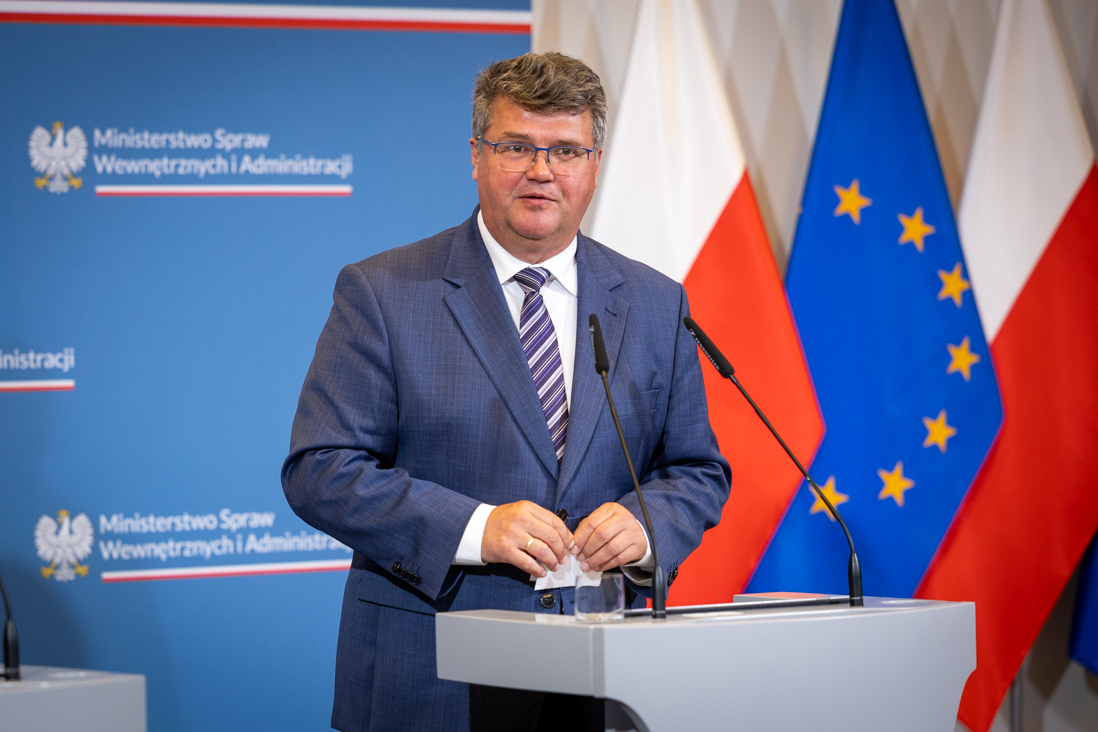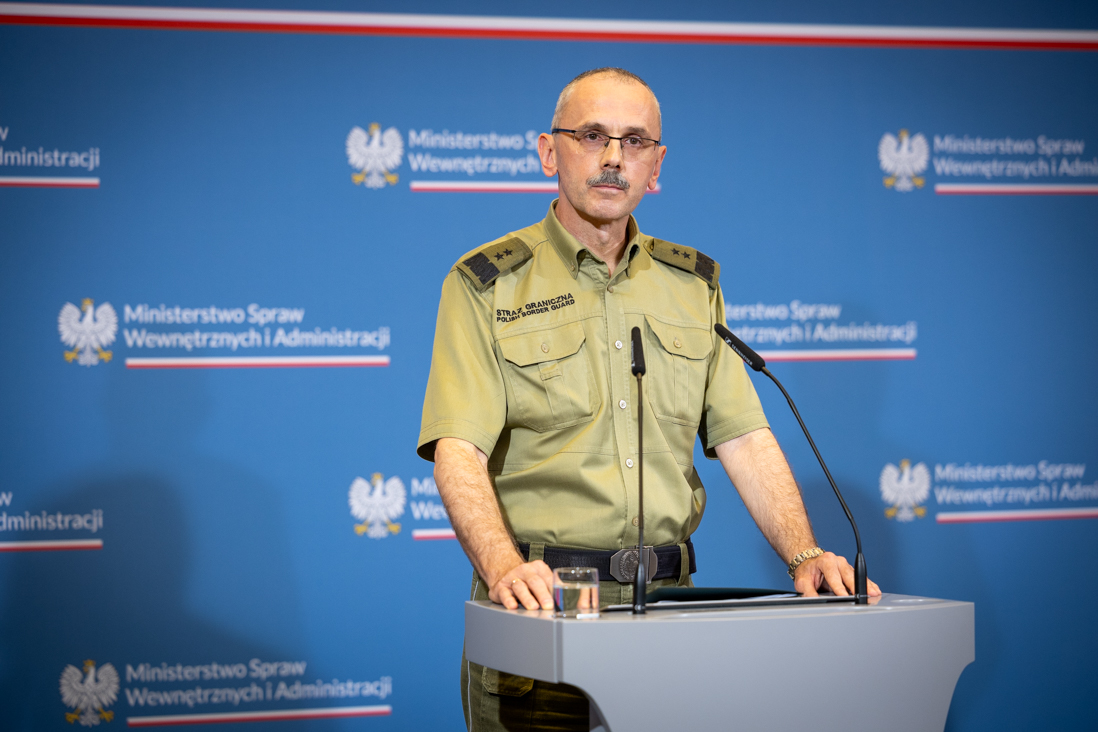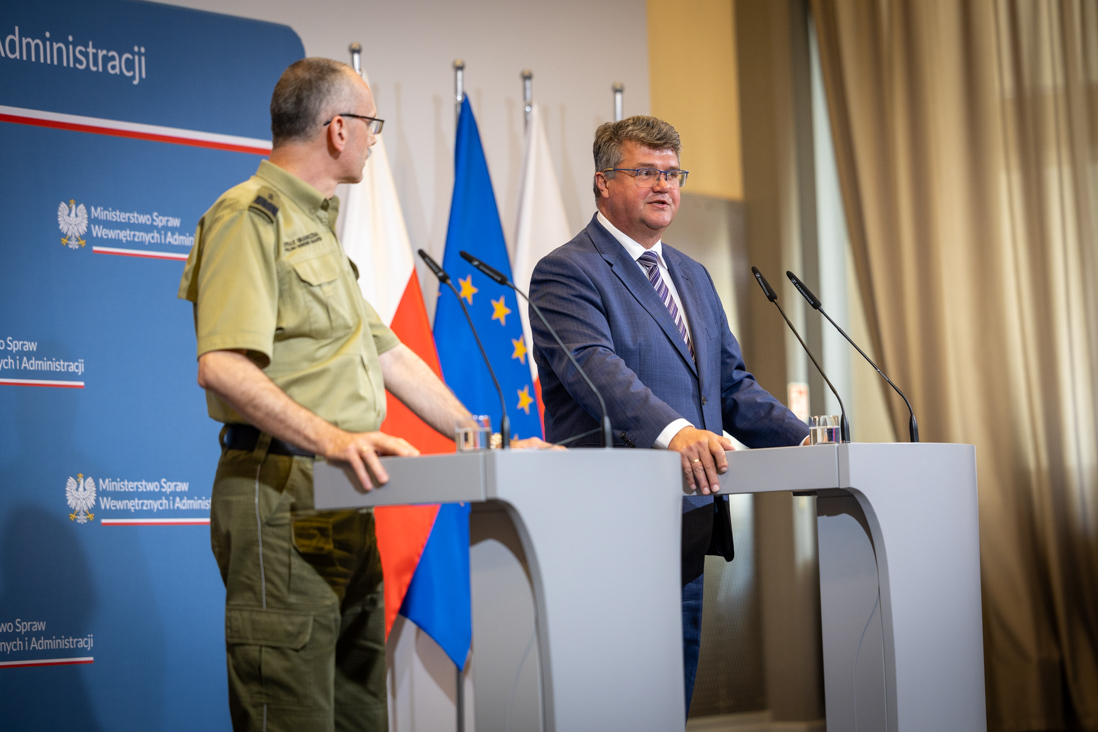Security of the Polish border – briefing by Deputy Minister Maciej Wąsik
08.08.2023
On Monday, August 7, Deputy Minister Maciej Wąsik briefed the press on the current situation on the Polish-Belarusian border concerning the constantly increasing migration pressures. Commander-in-Chief of the Border Guard, Major General Tomasz Praga, was also present at the briefing.

We are facing increasing migratory pressure on the Polish-Belarusian border, as the special services of Russia and Belarus continue to aggravate the situation,
said Deputy Minister Maciej Wąsik.
The Secretary of State in the Ministry of Interior and Administration pointed out that smugglers and Belarusian uniformed services are bringing in people from up to 40 countries and then helping them cross the border illegally.
Belarusian officers are trying to damage our barrier, using power tools and actuators, and trying to cut vertical elements,
he said.
The deputy minister noted the increasing aggression towards Polish officers guarding the border. From time to time, bottles, stones and branches are thrown at our officers,
said Deputy Minister Wąsik.
During the briefing, the Deputy Minister said that the Commander-in-Chief of the Border Guard had asked the Ministry of Defence to deploy more soldiers to the Belarusian border to support the Border Guard operation.
The Commander-in-Chief of the Border Guard, Major General Tomasz Praga, reported that 6–7 trains arrive in Belarus from Moscow every day. The migrants are then transported to staging points at Belarusian border posts, then transferred and ordered to the barrier.
Major General Tomasz Praga pointed out that the regime of Alexander Lukashenko bears full responsibility for this situation.
We must bear in mind that the regime on the other side of the border would not order anyone to cross the border without seeing any benefit. These groups are very aggressive, well-organised and led exclusively by Belarusian officers,
he said.
Physical and digital barriers on the border with Belarus
Physical and digital barriers are now used to secure the border with Belarus.
If it wasn't for the construction of the barrier on the border with Belarus, which consists of two components – digital and physical – I wouldn't be talking about 19,000 failed irregular border crossings, but about hundreds of thousands of such irregular attempts to cross the border’
said the Commander-in-Chief of the Border Guard, Major General Tomasz Praga.
He also reported that July was a record month, with almost 4,000 people attempting to cross the border illegally.
The 187-kilometre physical barrier, commissioned back in 2022, is 5.5 metres high. In 2023, the construction and commissioning of a digital barrier along the Belarusian border was completed, enabling the monitoring of a 206-kilometre section of the border. The total cost of these projects was 1.6 billion PLN.
The Border Guard is planning to install further protective measures along the eastern border, including electronic devices along sections of the Bug and Svislach rivers.
Digital barrier along the border of the Krolewiec Oblast
The construction of a digital barrier along the Polish-Russian border is also underway. The 200-kilometre long structure will be put in place along the entire land border with the Krolewiec Oblast (with the exception of the Vistula Spit, which has already been under digital surveillance for a number of years).
Most of the digital barrier along the border with the Krolewiec Oblast has been completed and will be put into operation in September,
said Deputy Minister Maciej Wąsik.
The project involves the installation of some 2,000 camera masts, 3,000 surveillance cameras and 700 kilometres of power, data and detection lines.



